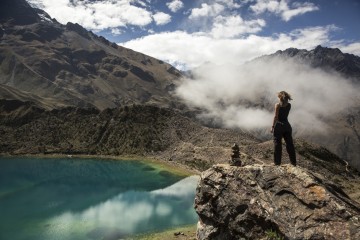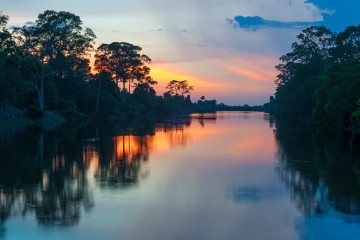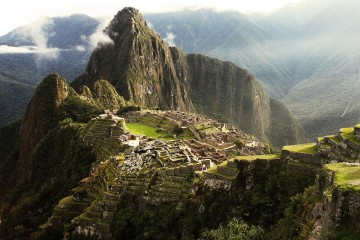TLDR: Peru’s safety situation has improved and stabilized, with the country ready to welcome an unprecedented number of tourists in 2025!
Unless you plan to join an impromptu political protest while holidaying in Peru (please, don’t), the country remains one of the safest for tourists in Latin America. The most visited country in the entire region has traditionally been exceptionally safe – yes, even during the much-talked-about protests a couple of years ago.
Today we revisit the safety situation and see if anything has changed that might disrupt travel plans in the coming year.
Is Peru safe to visit in 2025?
At the time of writing, Peru’s safety situation has improved and stabilized considerably, following sporadic periods of political unrest and protests in the previous two years. The country is welcoming tourists again, and all major attractions, including Machu Picchu, are fully operational. There has actually been a notable increase in foreign tourists this year, and even destinations considered underrated (and under-visited), like Paracas and the Nazca Lines, and Puno and Lake Titicaca, are seeing an uptick in visitor numbers.
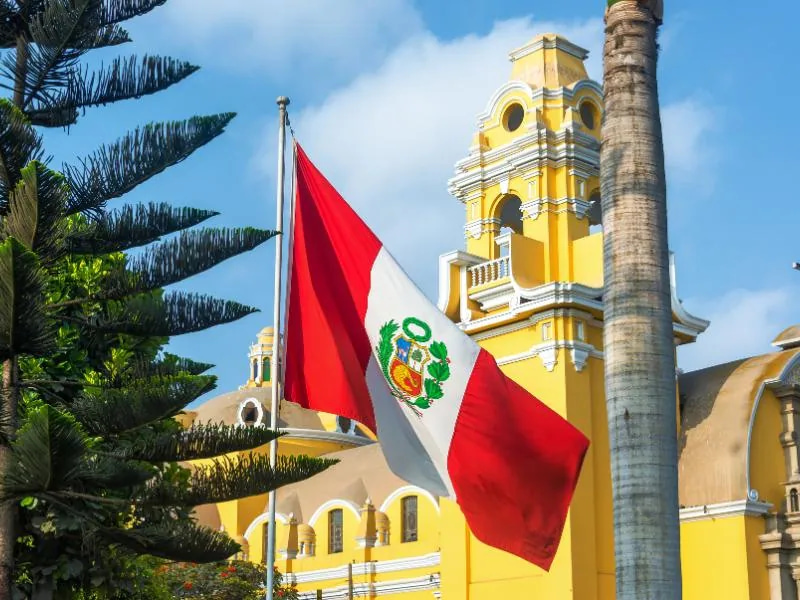
Peruvian flag and yellow church in the Barranco neighborhood in Lima, Peru.
While most areas in Peru are indeed safe, you’ll want to be a little more alert in bustling cities like Lima and Cusco. This is primarily in regards to petty theft, which remains a concern in crowded tourist areas—still, nothing out of the ordinary for highly touristed destinations. Regardless of what you may think, Lima's tourist hot spots are no more "dangerous" than Paris' – so watch your belongings and pockets on public transport and when in large crowds, avoid walking alone at night in quieter suburbs and stick to safer and busier neighbourhoods like Miraflores and Barranco. Due to its high tourist traffic and firm police presence, Machu Picchu remains one of the safest spots for tourists in the entire country.
Projections suggest that tourism will continue to grow steadily. By August 2024, tourist numbers had increased by 40% compared to the same period in 2023, and this year Peru is expected to welcome some 2.5 million tourists – nearly back to pre-pandemic levels.
What does that mean for you?
For the most part, the much-improved situation in Peru means you need to pre-plan your trip and book the most coveted experiences – like the Inca Trail to Machu Picchu and Lodge-based Treks, well in advance. The government has placed strict caps on daily visitors to the ancient Inca citadel (to just over 4,000), and tickets are now issued in time slots to ensure the precious site is not overburdened. Not only that – it is now mandatory to have a guide, and visits are limited to a maximum of four hours.
While all this is not to be begrudged – the preservation of such a priceless site should be a priority for everyone who visits – it does make the planning of a visit a bit of a logistical puzzle. So, the only way to make the whole thing stress-free is to simply book your trip in advance. Yes, you might be able to chance a last-minute ticket in March – the second-rainiest month of the year – but it’s still a gamble. One many people aren’t willing to take if travelling that far.
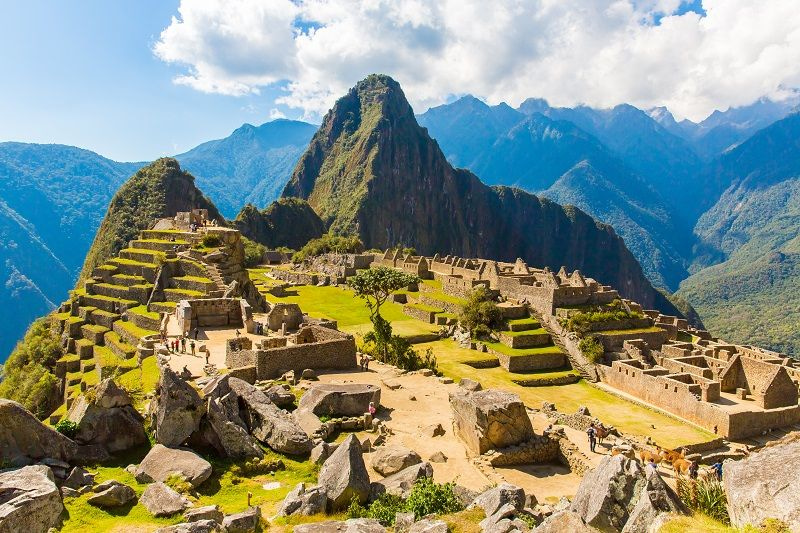
Machu Picchu is open and safe to visit.
Naturally, it's always important to use common sense, particularly in busy urban areas. Tourists are encouraged to use registered taxis, for example, avoid showing off expensive accessories, and stay informed about any potential protests, especially in Lima, where civil unrest can occur around the capital buildings. Much like Paris, Lima can see protests at a moment’s notice – both cities are home to politically engaged communities who see it as their right to take to the streets to voice grievances. If you live in a country where that is not common, it might be unnerving – but for many others, it’s just everyday life in a democratic country.
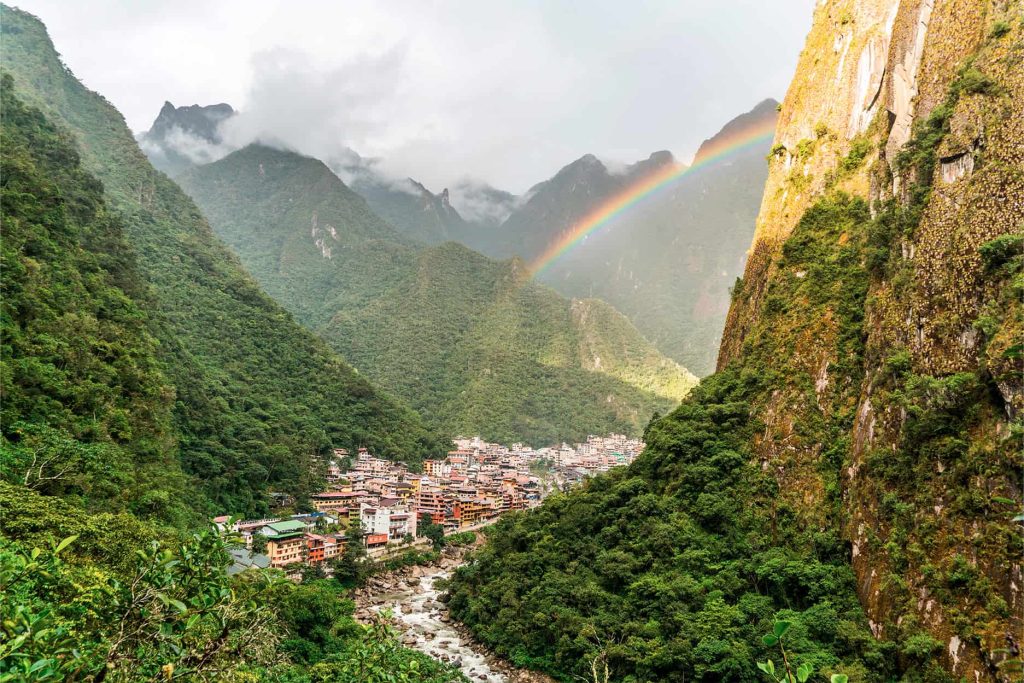
Aguas Calientes, the gateway to Peru's most iconic attraction, Machu Picchu.
Visiting Peru in 2025 - the best highlights
If you’re dreaming of a whirlwind visit that covers the main highlights in the country, look no further than our Signature Peru tour – what we like to call our ‘greatest hits’ album. Nine sensational days exploring the most coveted spots from the capital, Lima, culminating in a visit to Machu Picchu and Cusco.
Have more time? Then check out our Signature South America Circle tour, which is longer and more immersive and includes other major highlights in the continent, like Iguazu Falls, Rio de Janeiro, Buenos Aires, and the best wine-tasting region of Chile.
All our tours are customizable to suit your needs, and many can be combined to create bespoke itineraries.
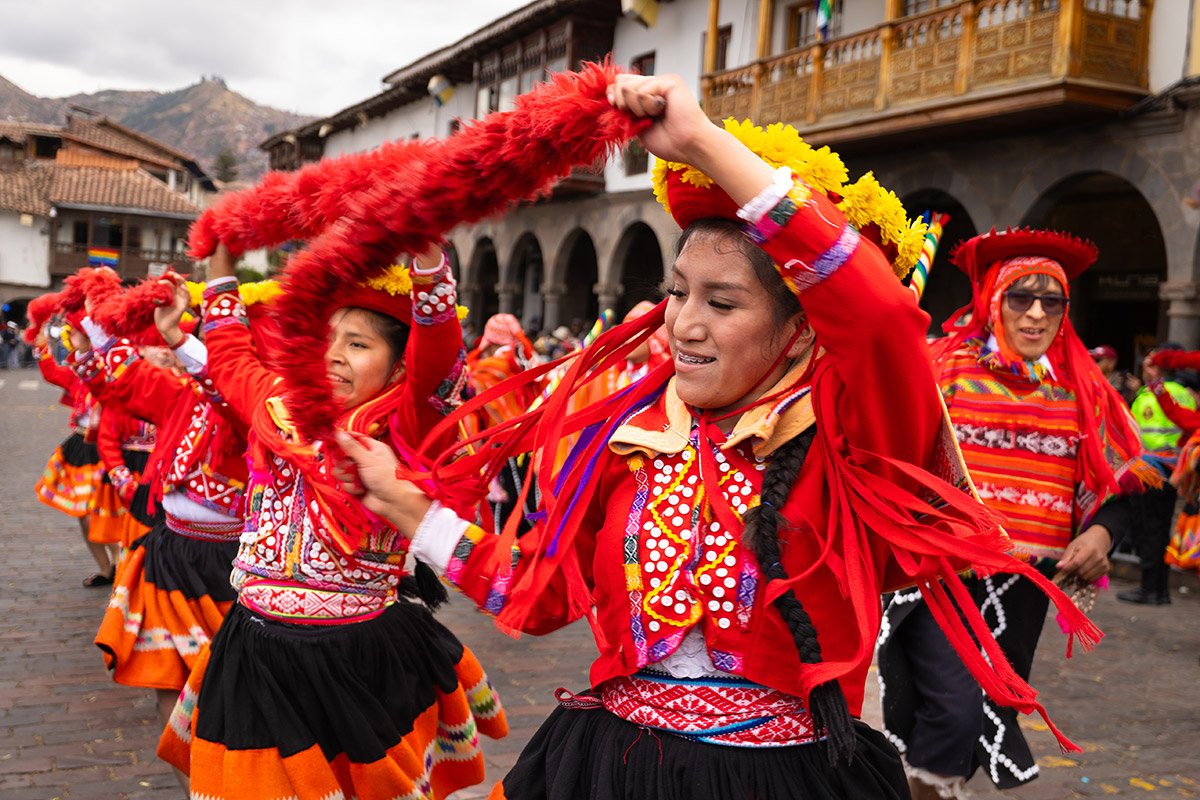
Cuzco Carnival parade party, traditional.
How safe is Peru for visitors, in general?
Aside from the odd stint of unrest, Peru is generally a safe place for tourists. The country relies heavily on tourism and constantly does its utmost to protect it like its economy depended on it. Because it does. It’s important to remember that if trouble does break out, tourists are rarely unsafe. Tourists are the country's lifeline in many ways, and protecting them is paramount.
We recommend you always keep abreast of the latest news from your government’s travel advisory board before travelling anywhere. And keep checking this page for updates. We shall endeavour to keep it updated, too.
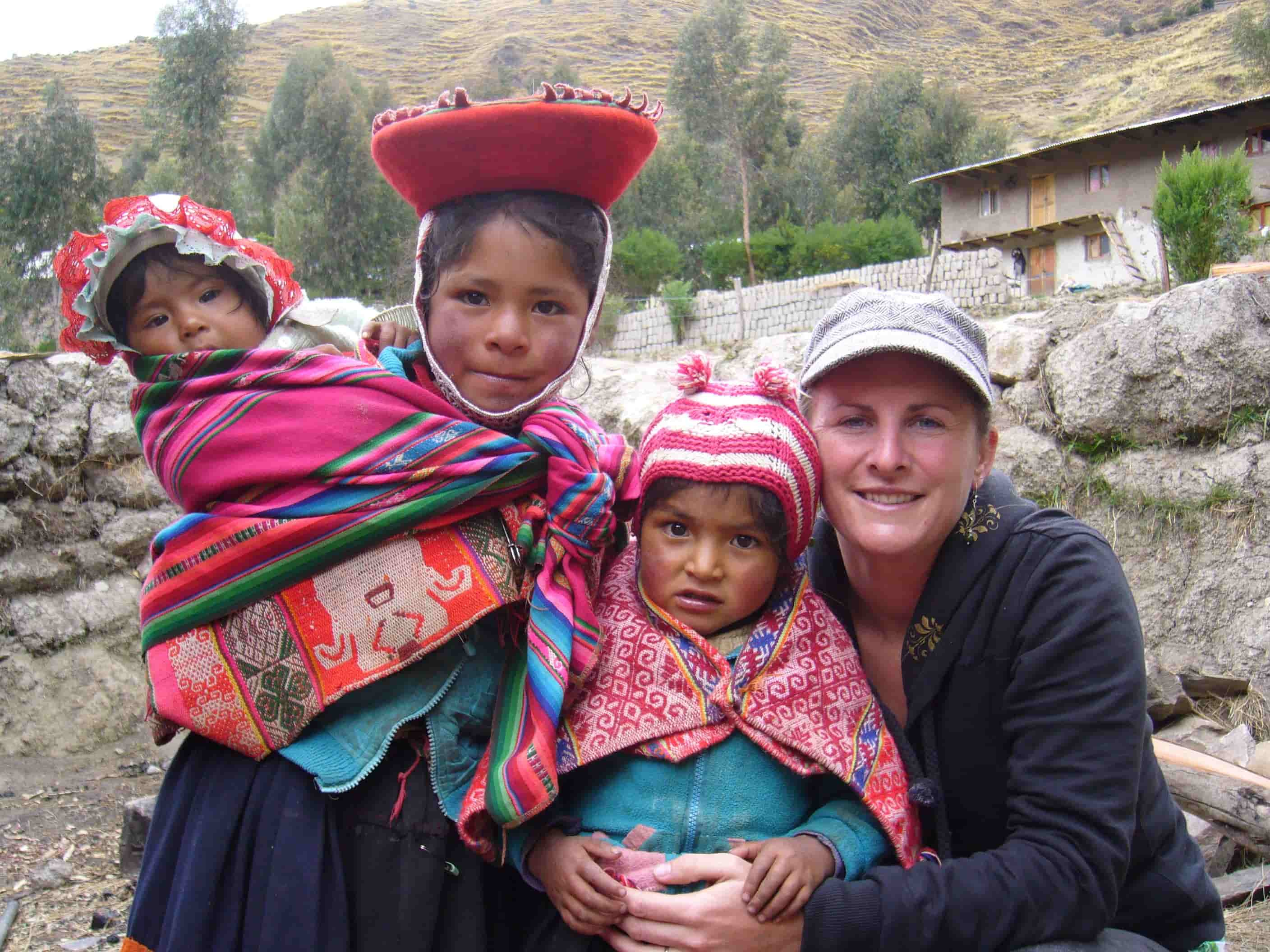
Rachel, founder of Viva, engaging with local children in Peru.
What you can do to keep safe when travelling to Peru
Aside from keeping updated, your best safety bet is to book and travel with a reputable travel agent (like us!) working with an array of local reps. The benefits of travelling on an organized tour of Peru are that it comes with a virtual safety net – up-to-date news on the ground, 24/7 support should you ever need it, and peace of mind knowing that we have your back.
This doesn't just help during political unrest or 'big' troubles. Having our local guides and support team on the ground in Peru means you don't have to figure everything out alone. Like almost every country on earth, Peru has its share of not-so-safe regions and city neighbourhoods you should avoid – a local guide will ensure you do precisely that.
General safety guidelines for Peru include the following:
-
Don’t display valuables (like expensive phones and cameras) in public
-
Keep an eye out for pickpockets on public transport and crowded tourist sites
-
Avoid travelling alone after dark (Peru is generally safe for lone travellers, even females. Yet moving about cities, taking taxis or buses late at night alone is not recommended)
-
Only travel with 100% comprehensive travel insurance (that ‘random’ inconvenience does not need to cost you dearly!)
-
Keep away from major coca-growing regions in the north
-
Whenever you arrive in a new city, find out which neighbourhoods/areas/streets you should avoid
-
Travel with a reputable tour/bus/travel operator
Peru is a land of incredible contrasts, ancient cultural traditions, extraordinary landscapes, fascinating histories, exquisite food, and warm, welcoming people. A visit to Peru is a trip not easily forgotten – for tours to the ancient site of Machu Picchu, luxury cruises in the Amazon, treks in the Andes and comprehensive itineraries showcasing the country's very best – check out our Peru Tours.
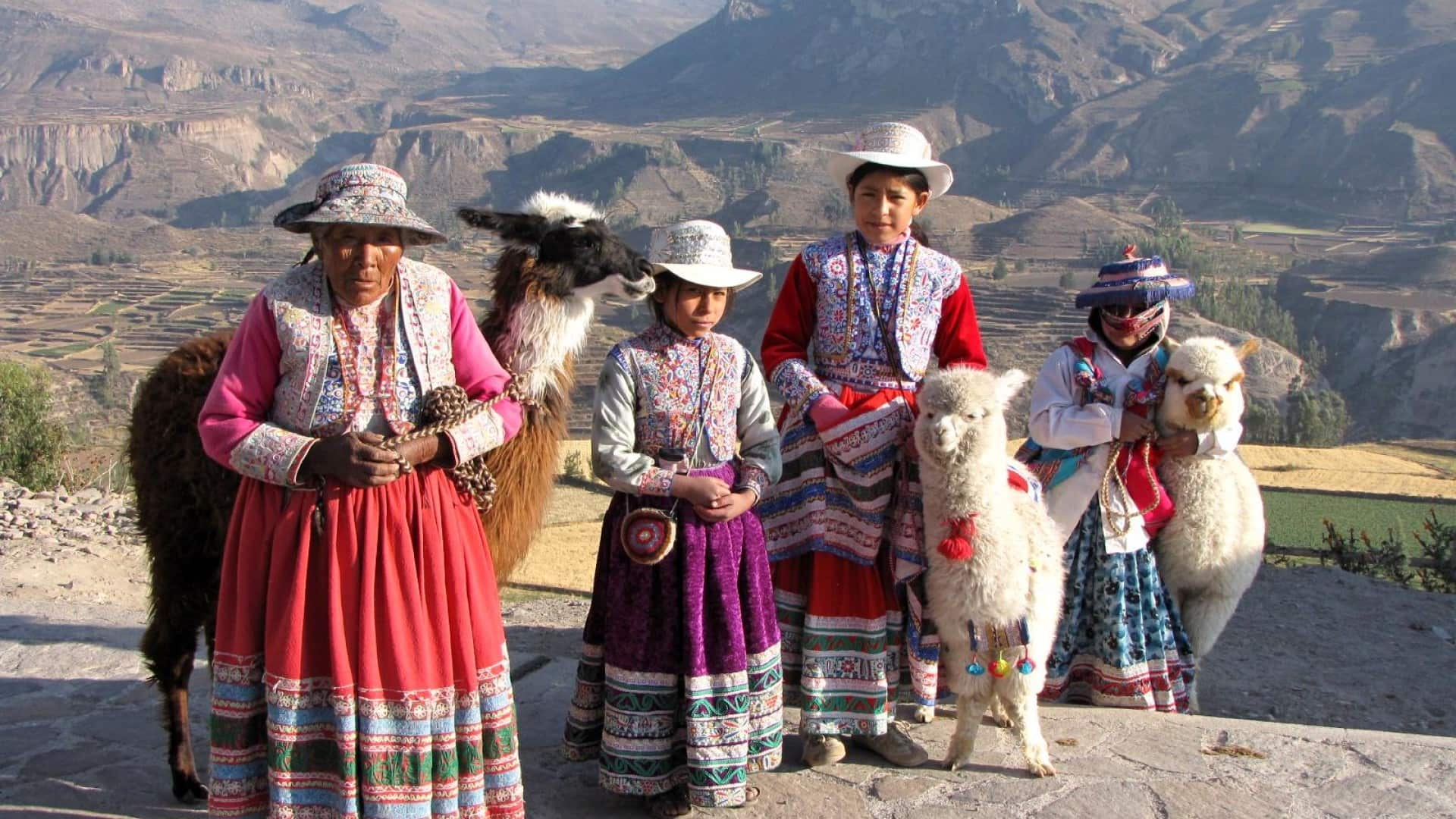
A warm welcome from the Peruvian women and a chance to meet llamas, symbols of its rich cultural heritage.
Curious to know what happened in 2023? Here’s a quick recap.
Even though political protests and sporadic unrest are part and parcel of life in Latin America, Peru’s 2023 woes caught international attention with a little more gusto than usual. Granted, it was probably because the Peruvian Government took the unprecedented decision to close Machu Picchu, the country’s most visited tourist highlight. Although the ancient Inca citadel closed for barely one month and eagerly reopened to tourists in mid-February 2023, many prospective travellers were still wary about visiting.
The catalyst for the unrest was the swift removal of Peru’s President at the time (Pedro Castillo) in a move that is best described as a political coup. General dissatisfaction with a fractured political system (and now faced with a new president no one actually voted for) meant Peruvians were quick to take to the streets and disrupt the general movement. Footage of protests, roadblocks, closures of airports and land borders, and quick evacuation of tourists made international headlines in a jiffy.
Protests didn’t erupt in Machu Picchu, but they impacted train operations to the citadel, effectively leaving tourists stranded on either side. The government then decided to close the ancient site to preserve its integrity, and that made for BIG news worldwide. A handful of foreign tourists were stuck in Aguas Calientes for a few days, but all were safely escorted out. It's important to note that tourists are not typically targeted during times of social unrest anywhere in South America. At most, they are inconvenienced. Some visitors needed to cut their trip short or skip a particular destination. The situation was brought under control quite quickly.
Although the idea of early general elections swirled around for a while, the proposal was eventually rejected. The next elections are expected to take place in 2026.
Incidentally, gaining deeper insight into Peru's social and cultural fabric and inequality between the well-to-do and disadvantaged minorities (mostly Quechua and Aymara communities living in the Andes) is a rewarding exercise for anyone who wishes to visit the country and make the most of their experience.
Start planning your dream trip to Peru - contact our Destination Specialists today.
Laura Pattara
Laura Pattara writes for Viva Expeditions with a special love for all things Latin America. She had guided overland tours across the continent, reached Machu Picchu five times on foot, and even dressed up as a giant toucan for Carnaval. With a degree in languages and two decades of global travel experience behind her, Laura has a long-standing love for the Andes, soaring condors, and a truly delicious empanada.
|








